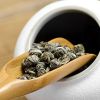-
Fast ShippingFree shipping for orders above $40
to most countries. -
Secure PaymentPay with Paypal, Credit Card …
-
Carefully SelectedFrequently Visit Tea Gardens.
Taste Repetitiously -
15 Days RefundNo Questions Asked
Refund Policy
Jasmine Dragon Pearls Long Zhu Green Tea
Soft and smooth texture with lingering jasmine taste
Soft and smooth texture with lingering jasmine taste
| Origin: |
Green tea - Fuding City, Fujian Province, China Jasmine – Hengxian County, Nanning City, Guangxi Province, China |
|---|---|
| Harvest Date: |
May 8, 2024 |
|
Plucking Standard: |
One bud with one or two leaves |
|
Tea Scenting: |
Five times scenting and one time scenting with flowers of richer fragrance |
| Dry Leaf: |
Even and tight round shape, with noticeable white pekoe and few jasmine flowers |
| Aroma: |
Rich jasmine fragrance |
| Liquor: |
Bright yellowish green |
| Taste: |
Soft and smooth, with prominent jasmine fragrance in the entrance, producing secretion of saliva and sweet aftertaste |
| Tea Bush: |
Fuyun No. 6 |
| Tea Garden: |
Wengxi Tea Garden |
| Caffeine: |
Low caffeine (less than 10% of a cup of coffee) |
| Storage: |
Store in airtight, opaque packaging; keep refrigerated |
| Shelf Life: |
36 Months |
Angel's Comment:
Producing from Fujian, picked by the standard of one bud with one or two leaves, this tea has rich jasmine aroma and soft tea liquid, without any bitter even with long time brewing.
Jasmine Dragon Pearl green tea is a fully handcrafted, top-quality green, as much an elegant work of art as it is a delicious drink. Its production is a long, complicated process, beginning with the original picking of the buds and leaves in spring, to be dried and stored until the jasmine blooms. These night-blooming flowers are picked early each morning afterwards, before the petals open - and when they do finally open in the early evening, they do so with an audible popping sound. After this the flowers are mixed with the dried tea and left to sit for about five hours, after which they are removed and the tea is allowed to carefully dry for a few more days.
This Long Zhu jasmine pearl green tea is made through this traditional processing technique, with five cycles of scenting followed by one final scenting with richer flowers, ensuring that each pearl fully absorbs the floral fragrance. Its taste is refreshing, soft, and sweet, never becoming bitter even if it is brewed at high temperatures. Whether on a slow morning or a sleepy afternoon, a cup of this aromatic jasmine tea with both refresh and invigorate your mind and your mood.
Wu Yin Yi Ti
Alongside the traditional five-time scenting, this type of dragon pearls has undergone a special process called Yi Ti or Ti Hua, meaning “final scenting”, with the goal of enhancing the intensity of the jasmine fragrance. Only first-grade flowers are used for this, with their large petals, pure white color, and intense fragrance. It order to retain this scent the tea leaves and jasmine flowers are mixed together for one more scenting, with no further drying afterwards. This final step usually takes 6-8 hours to completed, with 6-8kg of flower petals needed for every 100kg of tea leaves.
 |
Cup Method |
 |
Chinese Gongfu Method |
 |
Teacup: 12oz / 355ml |  |
Gaiwan: 3.8oz / 110ml |
 |
185℉ / 85℃ |  |
185℉ /85℃ |
 |
2 Teaspoons / 5g Tea |
 |
5g Tea |
 |
Brewing time: 5 - 8 mins |  |
6 steeps: rinse, 40s, 50s, 60s, 80s, 100s, 120s |
| Rinse time is around 5 seconds |
Wengxi Tea Garden is located in Fuding, where the weather is warm and humid with abundant rainfall all year. The tea plantation itself is surrounded by fog nearly constantly, creating the perfect conditions for tea bushes to grow in with a rich array of microminerals and organic nutrients in the soil.
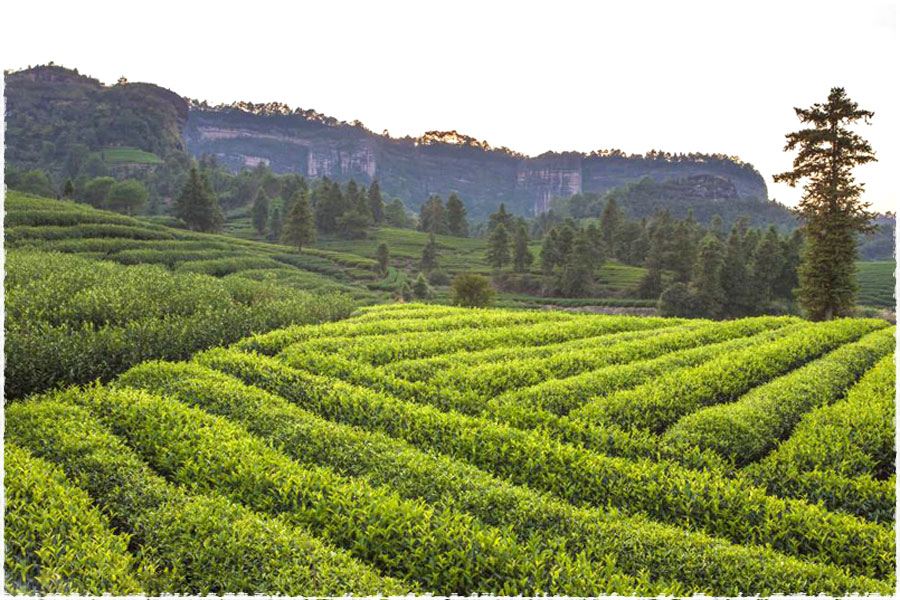
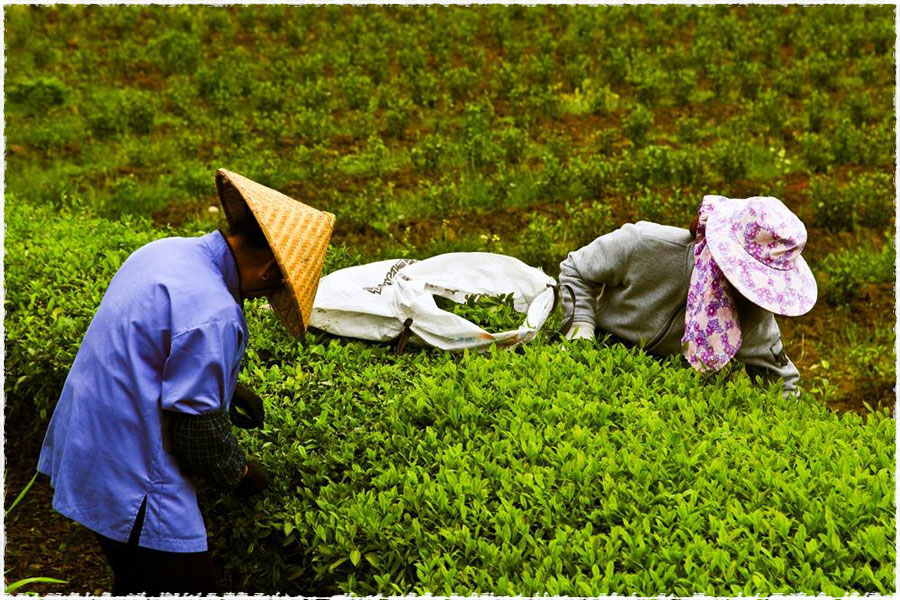
Mr. Chen is the producer of this dragon pearl tea. He has been learning how to make tea since he was 15 years old, and with jasmine tea specifically for more than 40 years total; it has become very familiar to him, and he does it in his own special style, which has earned a reputation among tea lovers.
He told us that “jasmine tea is among the most complicated varieties in all of teamaking. With more scenting steps the process becomes steadily more complex, and so too does the risk of ruining the tea increase. But, on the contrary, it also results in a higher grade of end product if the scenting is successful. The buds picked in spring must be immediately processed and frozen until the jasmine starts to bloom in the summer; because the blooming and peak aroma of the jasmine occurs at night, it is important that the scenting is done overnight as well. This often exhausts the tea workers; the entire process is tough, but if you love it, the hardship is worth it.”
Fujian - Green Tea
The material for the green tea comes from Fuding, a famous tea production region in the northeastern part of Fujian province. This area experiences a subtropical monsoon climate characteristic of coastal areas, with an average annual temperature of 18.5C and average annual precipitation of roughly 1660mm.
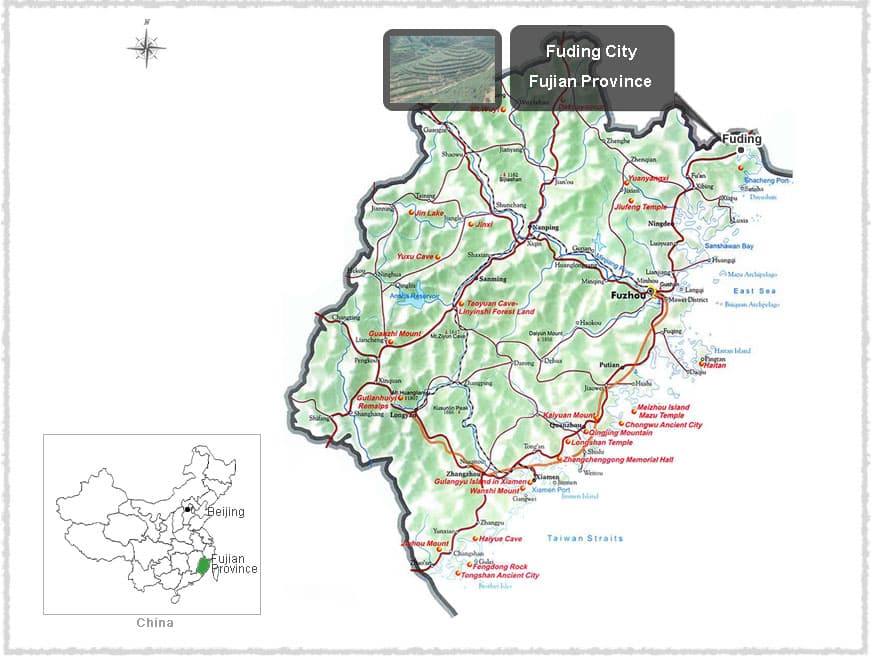
Guangxi - Jasmine Flower
Produced in Guangxi, China, the jasmine used to scent this tea has earned a respected reputation nationwide. The most productive area of Guangxi is Hengxian, known as The City of Chinese Jasmine for its ability to produce flowers of both high quality and high yield.
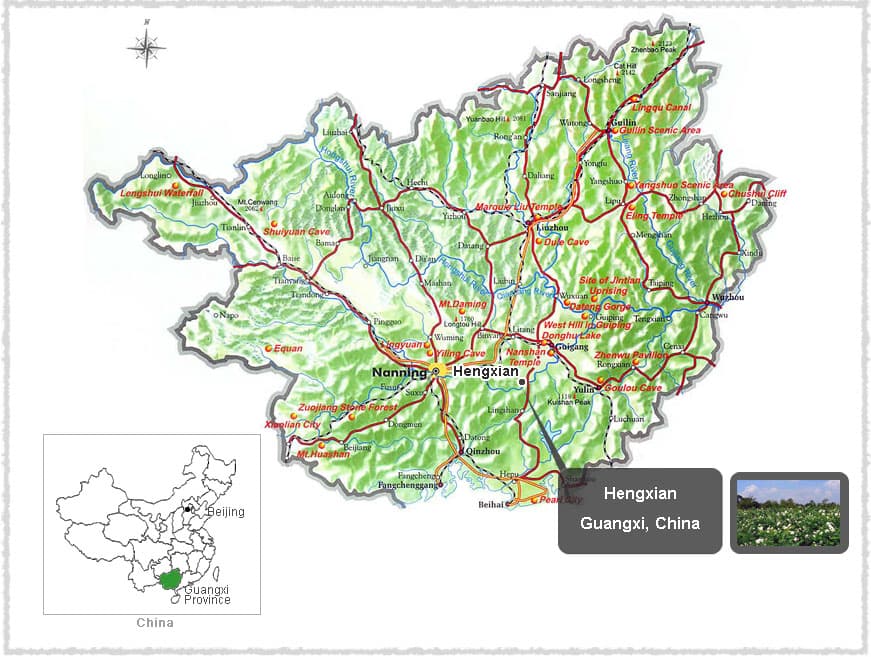
Fuyun No. 6 was selected by the Tea Research Institute at the Fujian Academy of Natural Sciences. In 1987 it was certified as a province-level quality tea variety; it belongs to the large-leaf variety of tea, and takes the form of a small arbor tree via asexual propagation. Its buds and leaves are yellowish-green in color with many small white hairs. It contains 23.95% tea polyphenols, 3.43% caffeine, and 2.58% amino acids, showing that it is indeed suitable for making black and green teas.
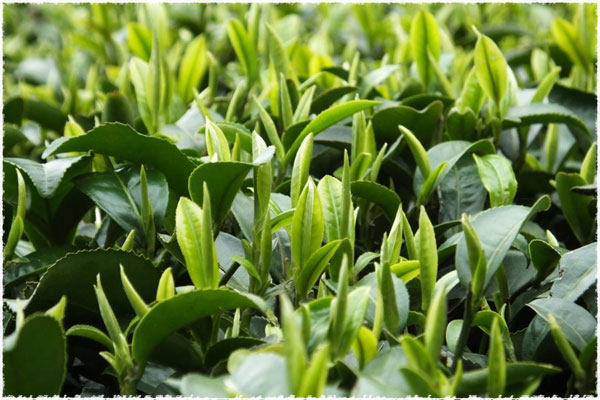
Scented green tea has a history stretching back over a thousand years, to the first innovation of adding spices and flowers to tea during the Song Dynasty around 960 AD. During the Ming Dynasty in the 1500s, the modern method wherein flowers are added to the tea prior to drying was introduced; however, at this time jasmine tea was quite rare, due to the complexities of the steps needed. Then during the mid-1800s in the Qing Dynasty, the production methods were perfected and as a result the number of tea farms rapidly increased, leading to higher volumes and lower prices. This in turn led to a surge in popularity, which the tea has retained to this day.
-
5 stars51
-
4 stars12
-
3 stars1
-
2 stars1
-
1 star0




